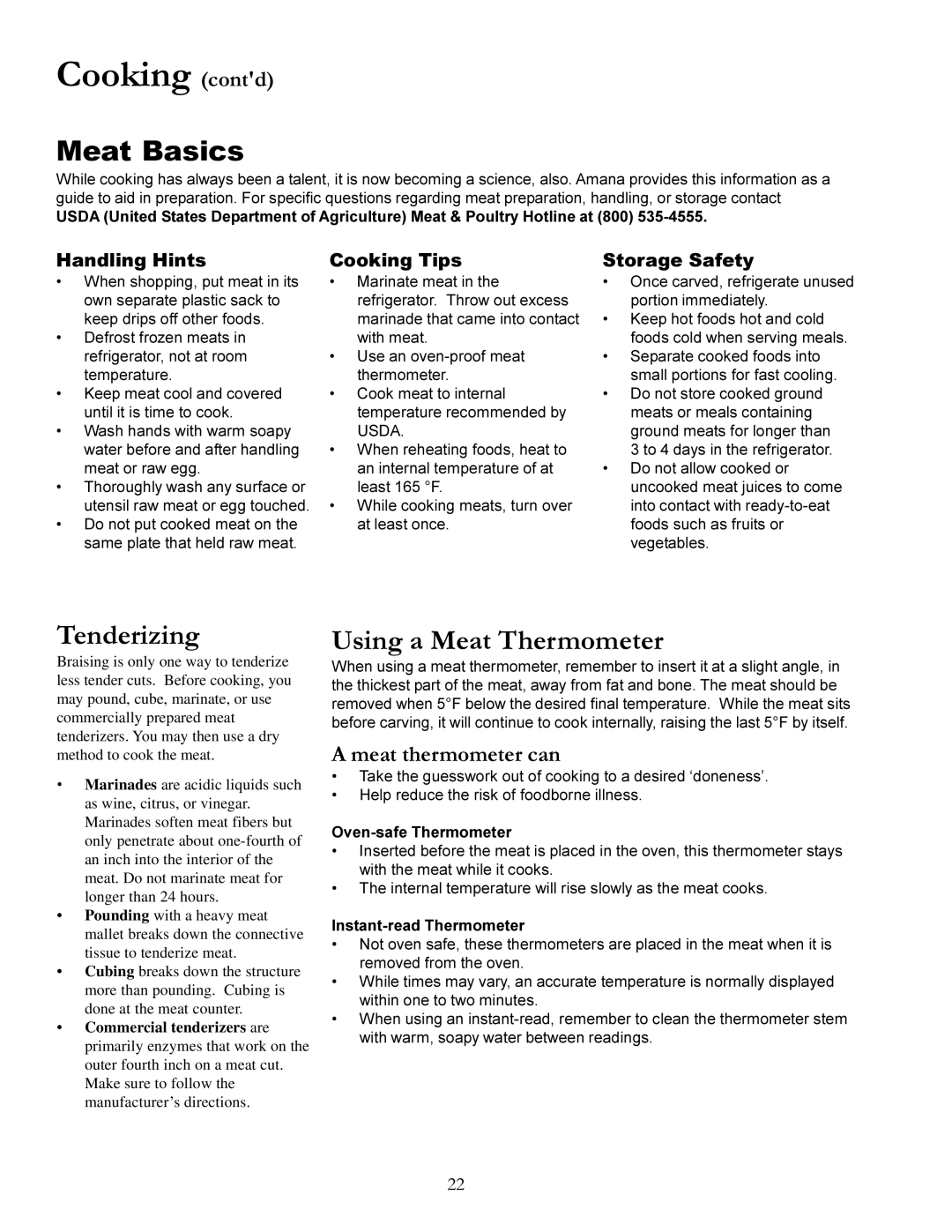ACF3355A, The Big Oven Gas Range specifications
The Amana ACF3355A Big Oven Gas Range stands out in the world of kitchen appliances, offering an impressive blend of functionality, design, and technology. With its spacious oven capacity and thoughtful features, this range is designed to cater to both novice home cooks and seasoned chefs alike.One of the key highlights of the Amana ACF3355A is its large oven, which provides ample space for cooking multiple dishes simultaneously. The 5.0 cubic feet capacity allows you to bake large meals or multiple trays of cookies at the same time, making it an excellent choice for families or those who love to entertain. The oven also features an innovative baking system that ensures even cooking, with heat distributed uniformly for perfectly baked cookies, casseroles, or roasted meats.
The range is equipped with a powerful four-burner cooktop that offers various heat settings, from a precise simmer to high heat for boiling. Each burner is cast iron, ensuring durability and stability while cooking. Additionally, the range comes with a continuous grates design, allowing you to easily slide pots and pans between burners without lifting them, enhancing convenience during meal preparation.
Amana has also incorporated user-friendly technologies into the ACF3355A. The simple control knobs provide easy access to adjust cooking temperatures, while the clear oven window and interior light allow you to monitor your dishes without having to open the oven door. Additionally, the range is designed with a self-cleaning feature, which significantly reduces the time spent on kitchen maintenance.
Aesthetically, the Amana Big Oven Gas Range is designed to complement a variety of kitchen styles. With its sleek finish and modern design, it can act as a centerpiece in your kitchen, ensuring that both fashion and functionality go hand in hand.
In terms of safety, the range includes features such as an oven lock to prevent accidental access and an igniter system for reliable gas ignition. The Amana ACF3355A is not just about cooking; it's about creating an enjoyable and safe cooking environment.
Overall, the Amana ACF3355A Big Oven Gas Range is a versatile cooking appliance that combines generous cooking capacity, innovative features, and modern design, making it a valuable addition to any kitchen. Whether you're whipping up a quick weeknight dinner or hosting a large gathering, this range is equipped to handle all your culinary needs with style and ease.
